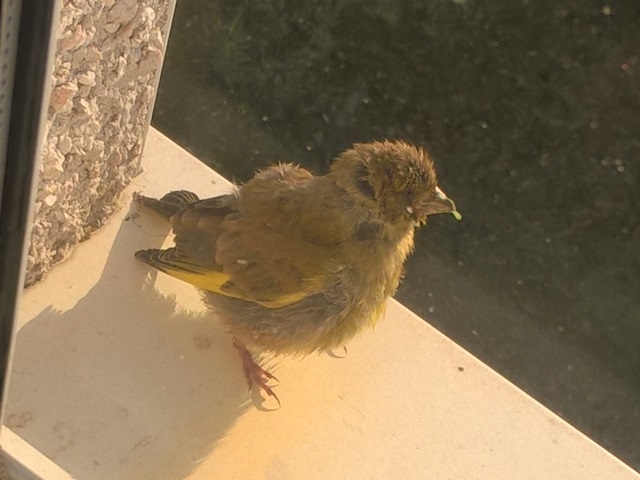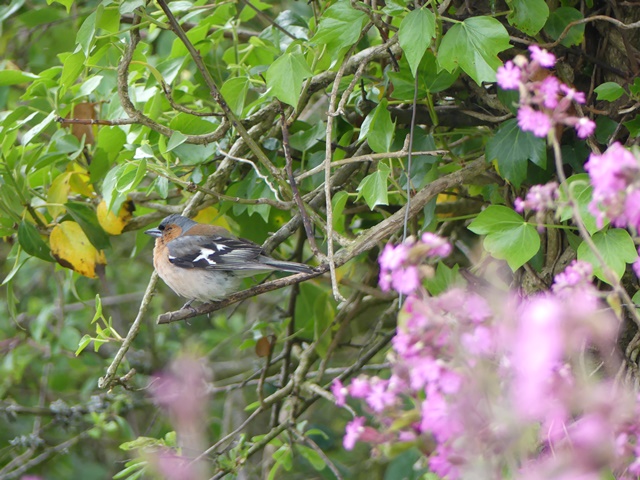With Christmas and the New Year approaching it’s time to start thinking about New Year resolutions. How about committing to ‘keeping it clean’ for wildlife?
Garden birds bring great pleasure to millions of people across the UK, and for some it’s the only contact with wildlife and nature they have. I too am a great lover of garden birds and I love watching them come to the feeders in my garden. Doing the BTO’s garden bird watch survey throughout the year has helped me recognise the early signs of sick birds.
Fortunately we don’t seem to see cases of all the garden bird diseases here on The Lizard, but there does seem to be one disease on the rise. Trichomoniasis is caused by a parasite that lives in the infected bird’s throat. This parasite’s presence causes lesions in the birds throat making it difficult (and eventually impossible) for the infected bird to swallow and breath.
Signs of Trichomonosis – infected birds will be fluffed up trying to maintain their body temperature as their fat reserves become depleted, so they will look bigger than normal, they may also have untidy feathers. They may have difficulty breathing and be slower to respond than normal and may have food and saliva stuck around their bill, and show difficulty swallowing.

Infected birds do not recover from Trichomonosis, they will die. The parasite is spread by the saliva of infected birds through drinking water and infected food, as they chew seeds and spit them out again because they can’t swallow them. The disease is most commonly seen in chaffinches and greenfinches, but affects lots of other birds too. (Please note: This disease does not pose a threat to the health of humans, cats or dogs.)
Unfortunately, where you have lots of birds feeding in one area, like garden feeders, there may be an increase in the spread of disease, but we can do our bit to prevent this. Cleaning your feeders, and moving your feeders regularly will help prevent the spread of many garden bird diseases including Trichomonosis.
Helpful Tips:
- Use feeders with drainage holes.
- Clean your garden feeders with a light solution of disinfectant and / or a product like Ark-clens at least once a week. After cleaning, be sure to rinse your feeders and dry them properly before refilling with fresh seed.
- Move your feeders to a new spot in the garden at least on a week.
- Use an appropriate and safe product like citrosan in water baths to keep birds drinking water clean.
- Have a spare set of feeders so that you can put clean feeders out with fresh seed while the other feeders are indoors for cleaning. (Sounds a bit much I know, but it really helped me keep on top of the cleaning routine).
- If you do get an outbreak of Trichomonosis in your garden, clean your feeders and move them to a new spot immediately. Try to clean up any dropped seed too. If it’s a serious outbreak it is suggested that you stop feeding for at least 3 weeks. To stop feeding is a last resort and should only been done if you have serious outbreak (several infected birds on a regular basis), because the reality is that this is likely to push birds away to other feeders which might not be as clean as yours.
For more information visit:
• Visit the BTO’s page on Trichomonosis
• Download the BTO’s leaflet: Birds and Hygiene leaflet (PDF, 1.2 MB)
• And to report finding dead garden birds, or signs of disease in garden birds, use the BTO’s online reporting system: Garden Wildlife Health
Published: Dec 2016
Author: Catherine Lee (Volunteer and Community Officer with Lizard National Trust. Volunteer with RSPB and the British Trust for Ornithology)
